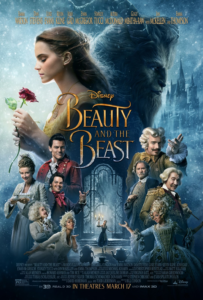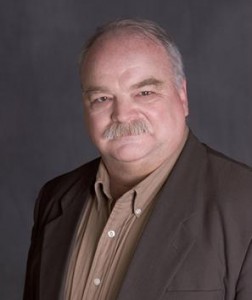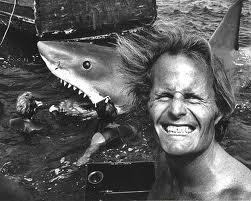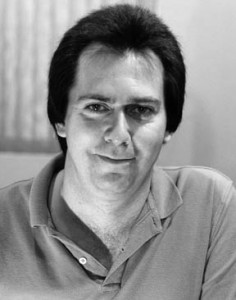Richard Riehle is best known for his cult favorite role of Tom Smykowski in “Office Space”. He has played Santa Claus more than five times, including films like Disney’s “The Search for Santa Paws” to “A Very Harold & Kumar Christmas”. Besides comedies, he has also broke out in the horror genre with films like “Hatchet” and the upcoming “Texas Chainsaw 3D”. Media Mikes had a chance to chat with Richard about his amazing career to date and his love for what he does.
Mike Gencarelli: After playing roles in over 150 films and over a 100 TV series; what keep you drives and keep you inspired?
Richard Riehle: I love it because every project is a new experience and adventure. You go from playing Santa Claus one day to a serial killer the next. It offers all sorts of opportunities to try new things. Whether it is for a physical or psychological role. It is just great.
MG: Since it is the Holiday season, I have to ask what do you enjoy most about playing Santa Claus five times now, most recently in “A Very Harold and Kumar Christmas”?
RR: They are all different. It ranges from “The Search for Santa Paws”, which is a family film with talking dogs, to “A Very Harold and Kumar Christmas”, where I am a bong smoker [laughs]. I just love it.
MG: Can you tell us about how you got involved with “Office Space”?
RR: “Office Space” was just an amazing experience. Mike Judge spent a long time casting it, partly because he wanted a group of people that enjoyed hanging out with each other. I think that aspect really shows in the film. We got down to Austin and he told us flat out that we are going to be working some long hours but that every night he would take us out to the clubs or dinner. We just had a great time. It was a 26 day party.
MG: Can you reflect on the cult following that the film and your role Tom Smykowski has developed over the years?
RR: It has been absolutely amazing. When it first came out it wasn’t in theaters very long. We were excited about the good response it got and our work in it but we figured that it was done with. But about six months later, people were stopping me in the streets and asking me to quote the film. It just so happened at the time, I was doing a show for Fox, so I ran into Mike and he said it just came out on VHS and cable and has developed this whole new life. The most amazing part for me is that it has continued still through today. People are still quoting the film and spreading the word to their friends that haven’t seen it. It is just great.
MG: I have the “Office Space” stapler on my desk [laughs]
RR: [laughs] I will tell you a fun story about that stapler. I was at a cigar place in Beverly Hills. We were about to leave but my friend said that Sammy Hagar just called and said he was coming in and always brings a bunch of really beautiful girls. So we ordered another round and waited. Sure enough he came in with all these beautiful girls. Before we left my friend said he wanted to show me his humidor, which was right under Arnold Schwarzenegger’s. So as we were leaving two of Sammy’s girls where heading to the bathroom and they stopped me and said “Oh you were in “Office Space”, can we have an autograph?” I said “Sure” and they asked me to put down the line about the stapler. I said that actually wasn’t me and that was my buddy Stephen Root…but I was in the film. I asked them again if they still wanted an autograph and they said “Yes, please…and can you put down your line about the stapler?” [laughs].
MG: You not only just play roles comedies, you have a nice range into horror genre like “Hatchet”; what do you enjoy most about switching it up in films like that?
RR: “Hatchet” was sort of my introduction to horror. I have always enjoyed watching them but for some reason I never got cast in them. A buddy of mine, Joel Moore, was played the lead in the film and called and asked if I wanted to fill in for someone that dropped out. I told him “Of course” and that I was waiting to do one. It was just such a great and fun experience. Since you are dealing with these horrific things, it is usually one of the most fun sets to be on – horror films in general. Horror films are also shot all over, so you get to go to all sorts of strange and cool places. I did one called “Growth” and we got to shoot in Martha’s Vineyard, which was terrific and we got to explore the island, which was amazing.
MG: Tell us about your role of Farnsworth in “Texas Chainsaw 3D”?
RR: “Texas Chainsaw 3D”, which comes out January 4th, was shot in Shreveport, Louisiana. I had never been there either. We shot a bunch of it on this old munitions plant from WWII. The film is really a great idea and it works really well. They go back to the original “Texas Chainsaw” from 1974 and start from the last shot of that film with Sally jumping into the pickup truck. Leatherface goes back to his house after his dance of frustration. The local police chief shows up at the house and tries to bring him in but the family will not let him do it. A group of vigilantes show up and level the place and everyone is thought to be dead. 18 years later, the grandmother of the whole group, who is living in a mansion outside of town, dies. I play Farnsworth, her lawyer, and I have to find this girl that supposedly didn’t die during the attack and bring her back and offer her this mansion. But then of course…all hell breaks loose!
MG: Do you have a role that stands out for you’re as most memorable or challenging?
RR: I certainly love Tom Smykowski in “Office Space”. It was a wonderful experience doing it and since then it has lived on. I really like playing Carlson in “Of Mice and Men”, which was a while back. He is the guy that shoots the dog. I also did a TV series on Fox a while back called “Grounded for Life”, which was a wonderful experience as well. The thing is that it goes back to your first question; every role is so interesting and different and each with their own individual challenges. My next role is always going to be my favorite.
MG: What other projects do you have in the cards for 2013?
RR: It is hard to tell. A lot of the projects I do are these little independent films. The greatest difficulty is not so much getting them in the can, as it is finding distribution. I did this Western called “Dead Man’s Burden”, which I really liked. Clare Bowen, who is one of the leads in “Nashville” right now, is the lead in that. It was shot in New Mexico with no time and money. So that was recently shown in an LA film festival and I thought it came out really good. So keep an eye out for that one hopefully soon.





